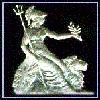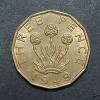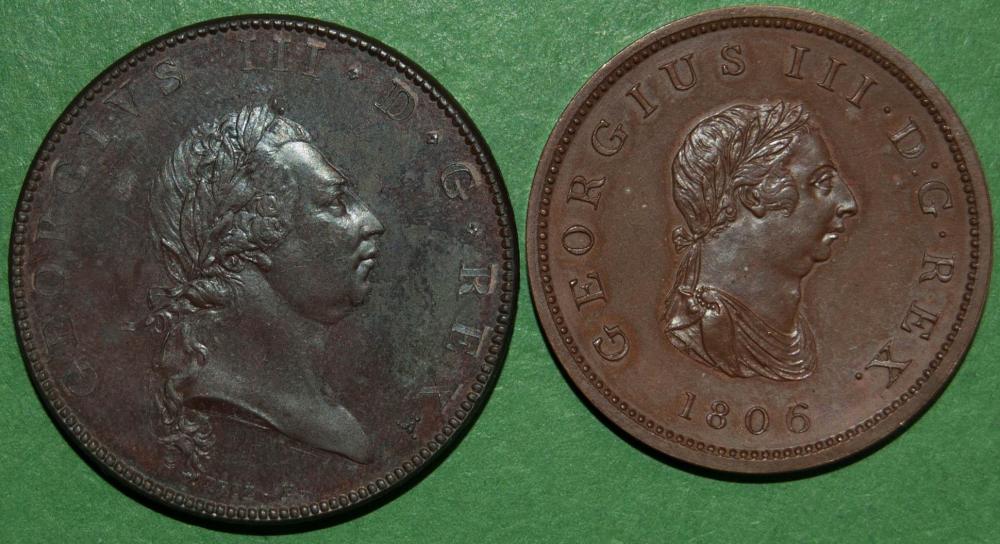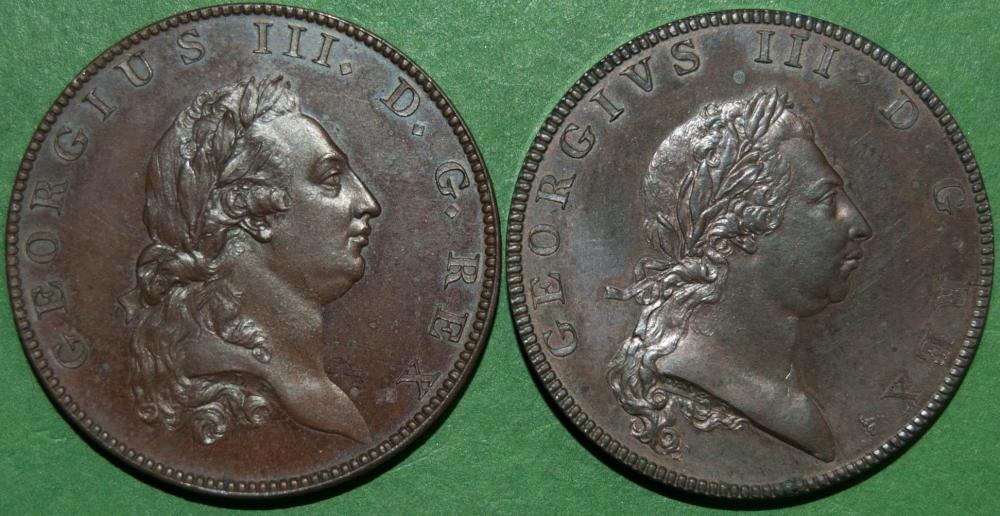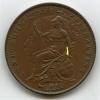Leaderboard
Popular Content
Showing content with the highest reputation on 09/24/2021 in all areas
-
For completion's sake, a pair of RM products, the 1867 bronzed proof and the 1879 toned bronze proof clearly shows the uniformity achieved with bronzing compared to the toning variation seen on the second coin. As stated earlier, when there is full original lustre, the copper (or bronze) attribution is unambiguous, but the main thing to look for is the evenness of colour/toning. Copper can tone in a multitude of ways. Bronzing reduces its ability to do so. Hope this helps.3 points
-
Australia changed to the metric system in the early 1970s and is now entrenched.However many things retained their imperial size and were soft converted. For example 3” x 2” timber became 75 mm x 50 mm. Drinks in pubs stayed the same as a midi or pot was half a pint or 10 oz.a schooner three quarters of a pint or 15 oz and a pint or 20 oz. I think these were US fluid oz. as a UK pint is 16 fluid oz. and if it is water weighs a pound.. Having said that I think the adoption of the metric system has led to a marked decline in arithmetic skills in this country as the imperial system required an understanding of units to survive. For example when school leavers were confronted with a time sheet they were incapable of performing the calculations necessary to complete their weekly time sheet. For the most part they could not handle a system based on 60 rather than 10. Not only that a good understanding of units is essential for anyone considering a science based career. Imperial units are still in the language ie missed by miles, give or take an inch etc. Babies birth weights and the surf have also retained their imperial units2 points
-
Certainly not Republican. I think it is Commodus as Augustus, 177 to 192 AD. Legend is one of three variations similar to M COMM ANT P FEL AUG BRIT, types L M and N in Sear. I can't be sure of the reverse - there are lots where there is some God or other standing and holding various items with long and complicated legends around the edge. Legend ends COS III I think, but Sear does not list all of the variations. It could be S5654 - Libertas holding pileus and sceptre - or similar.2 points
-
The assumption is that the cataloger got it correct. Granted that they have MUCH MORE experience than I have, and I am loathe to dispute their attribution, but we all know that mistakes occur. Caveat emptor.2 points
-
At the behest of your suggestion, I tried both. I got much further with Peck than Google, although still not clear what precise chemical agent was used, or exact procedure followed, to bronze the copper. But here is what Peck says at page 220 (last paragraph) of the 1964 re-print:- Not 100% crystal clear whether Peck was referring to currency pieces which had toned down, or to copper proofs. If currency pieces then other features can mark out the distinction between them and a proof. In the case of KP31, P1326, for example, the fact that the 0 of the date is incomplete and the 1 has no base serif. Also, the reverse is not inverted, which it is on the currency strike. Peck continues:- Rather an obvious point but worth repeating. At page 405, Peck states:-1 point
-
Yes, that's technically and chemically correct. However, PROOFS are described as either "copper proof" or "bronzed proof". To describe one using both terms appears to be a deliberate move to cover up uncertainty ?1 point
-
Are they put in some sort of acid bath b4 striking , the process is probably writen down in peck somewhere , otherwise try the obvious and google it, LOL1 point
-
Yes, that makes the comparison easier. Thanks.1 point
-
I think the secret died in the 19th century, and no official bronzed proofs have been made after 1867 (though some say some 1877 farthings are bronzed - that would need to be seen in the flesh.1 point
-
I don't know. I've looked but can't find anything written down. Logic says it has to be a fluid to ensure even coverage because anything else would give inherently patchy results, but whether that is a chemical solution or reactive atmosphere, I'm unsure. The Taylor restrikes sometimes have what appears to be powder residue in the recesses, which I think may be dried out bronzing agent due to insufficient washing after application.1 point
-
1 point
-
1 point
-
On the OP - copper first, bronzed second. That's bronzed, but depending on the lighting angle as a result of the surface not being planar, it is possible to get considerable apparent variation in colour which is not always obvious in hand. Bronzed copper is correct. The flan is copper with a chemically produced bronzed finish. In hand it is usually fairly easy to say which is which, with the caveat that there will always be one of two which are a little ambiguous. The main thing is to ensure you are comparing apples with apples and not pears, because depending on the period in which a coin was struck, the bronzing can vary in colour. Toned copper examples however are reasonably consistently dark in colour with any multi-hued colours depending on the lighting angle. I've put a few things together to show some differences, but given there is variation even within a period, don't take these as definitive examples. The main point is that bronzing is done to produce an even surface colour which doesn't exhibit the greater variation in toning seen with copper. Medals are frequently bronzed for this reason. Obviously, when you have full red surfaces, the coin is clearly copper and not open to question. This will take a few posts, so bear with me. Sorry they are all unfashionable halfpennies and not pennies, but the same principles apply. First up is an Early Soho bronzed (P935) left, compared with a Late Soho copper (P973) right. As you can see, the bronzed finish has an even colour across the surface.1 point
-
I cannot hope to get this one exactly, but this web page may get you closer, if you haven't already used it: http://ptolemybronze.com/ptolemy_series.html The size might help to home in on which it is - certainly from around the time of Ptolemy VI but which mint will be the question.1 point
-
Is there a significant difference in price between the bronzed and copper? If not, then it might not be worth the expense to get both as they have similar desirability and look virtually identical. However, if you really like the coin, then the existence of two versions is a perfect excuse to get one more.1 point
-
Ha, yes Indian coins were something else. The following list if coins were still all being produced in the time of George VI. Amazing to think that twelfth Annas were being minted, and there are 16 Annas to a Rupee.........the Rupee itself now worth slightly less than the UK new penny. 1/12 Anna 1/2 Pice = 1/8 Anna 1 Pice = 1/4 Anna 1/4 Anna 1/2 Anna 1 Anna 2 Annas = 1/8 Rupee 1/4 Rupee 1/2 Rupee 1 Rupee1 point
-
Let's not go there with the Indian system of Annas, etc. in addition to the aforementioned rupees....1 point
-
Several 'colonial' countries used 'cents', with roughly same size as some lsd coins. e.g. British Honduras and Canada (also dollar). Mauritius and Seychelles had rather attractive 1 rupee and half rupee, same as India. One of the more interesting pieces is the half shilling / 50 cents from East Africa which shows both denominations in the legend, and has an attractive image of a lion at the foot of Kilimanjaro. I have a collection of last ever minted George VI pieces from around the world; I have every denomination apart from the 1941 Hong Kong 1 cent. Happy to share that information if helps.1 point


